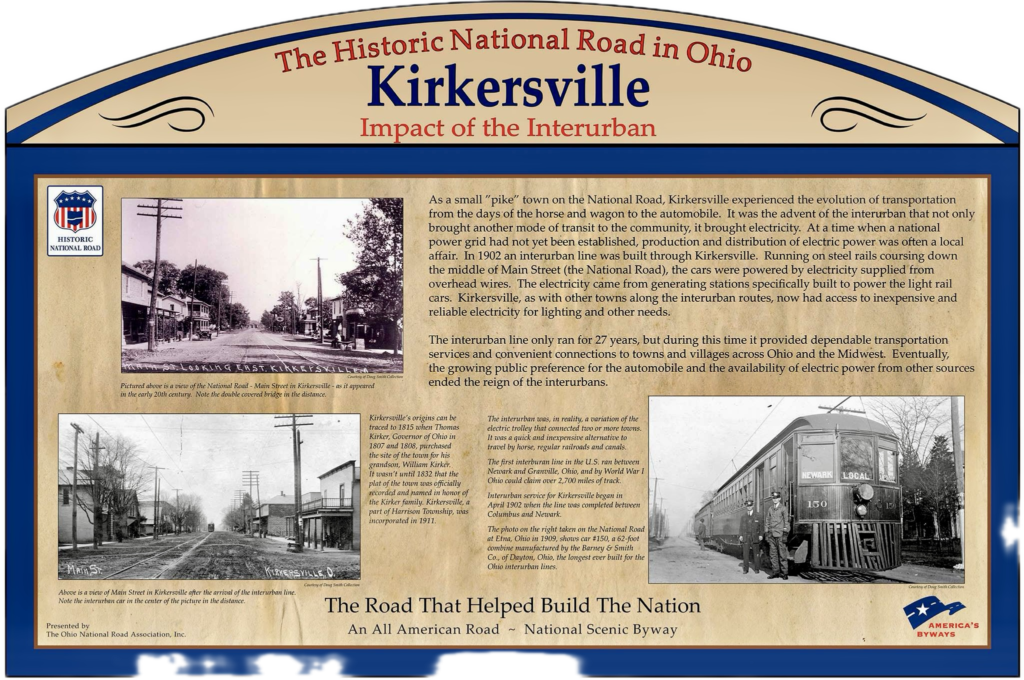 The Road that Helped Build a Nation
The Road that Helped Build a Nation
Kirkersville origins can be traced to 1815 when Thomas Kirker, Governor of Ohio in 1807 and 1808 purchased the site of the town for his grandson, William Kirker. It wasn’t until 1832 that the plat of the town was officially recorded and named in honor of the Kirker family. Kirkersville, a part of Harrison Township, was incorporated in 1911.
As a small “pike” town on the National Road, Kirkersville experienced the evolution of transportation from the days of horse and wagon to the automobile. It was the advent of the interurban that not only brought another mode of transit to the community, it brought electricity. At a time when a national power grid had not yet been established, production and distribution of electric power was often a local affair. In 1902 an interurban line was built through Kirkersville. Running on steel rails coursing down the middle of Main Street (the National Road) the cars were powered by electricity supplied from overhead wires. The electricity came from generating stations specifically built to power the light rail cars. Kirkersville, as with other towns along the interurban routes, now had access to inexpensive and reliable electricity for lighting and other needs.
The interurban line only ran for 27 years, but during this time it provided dependable transportation services and convenient connections to towns and villages across Ohio and the Midwest. Eventually the growing public preference for the automobile and the availability of electric power from other sources ended the reign of the interurbans.